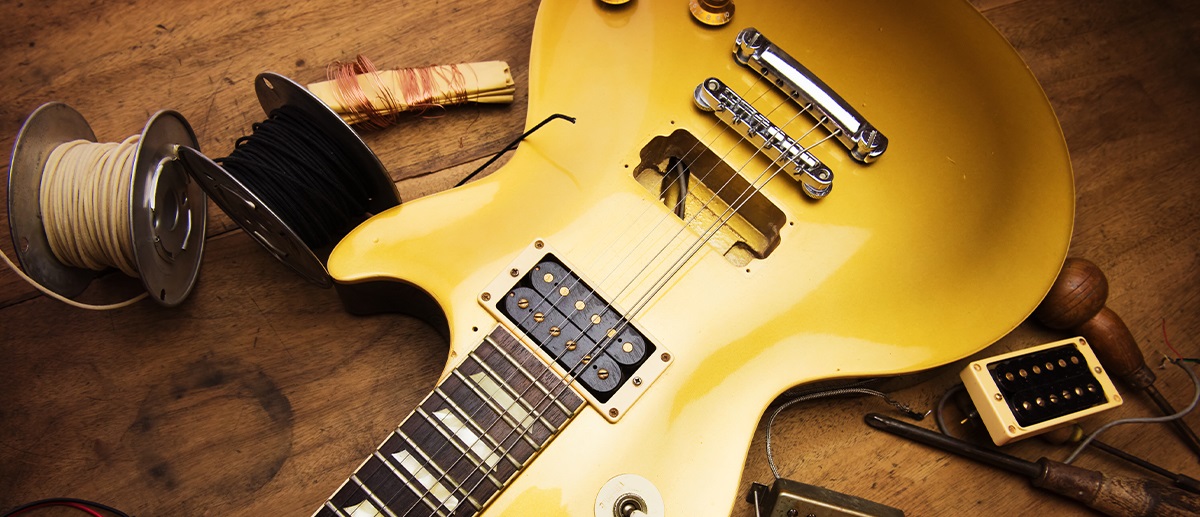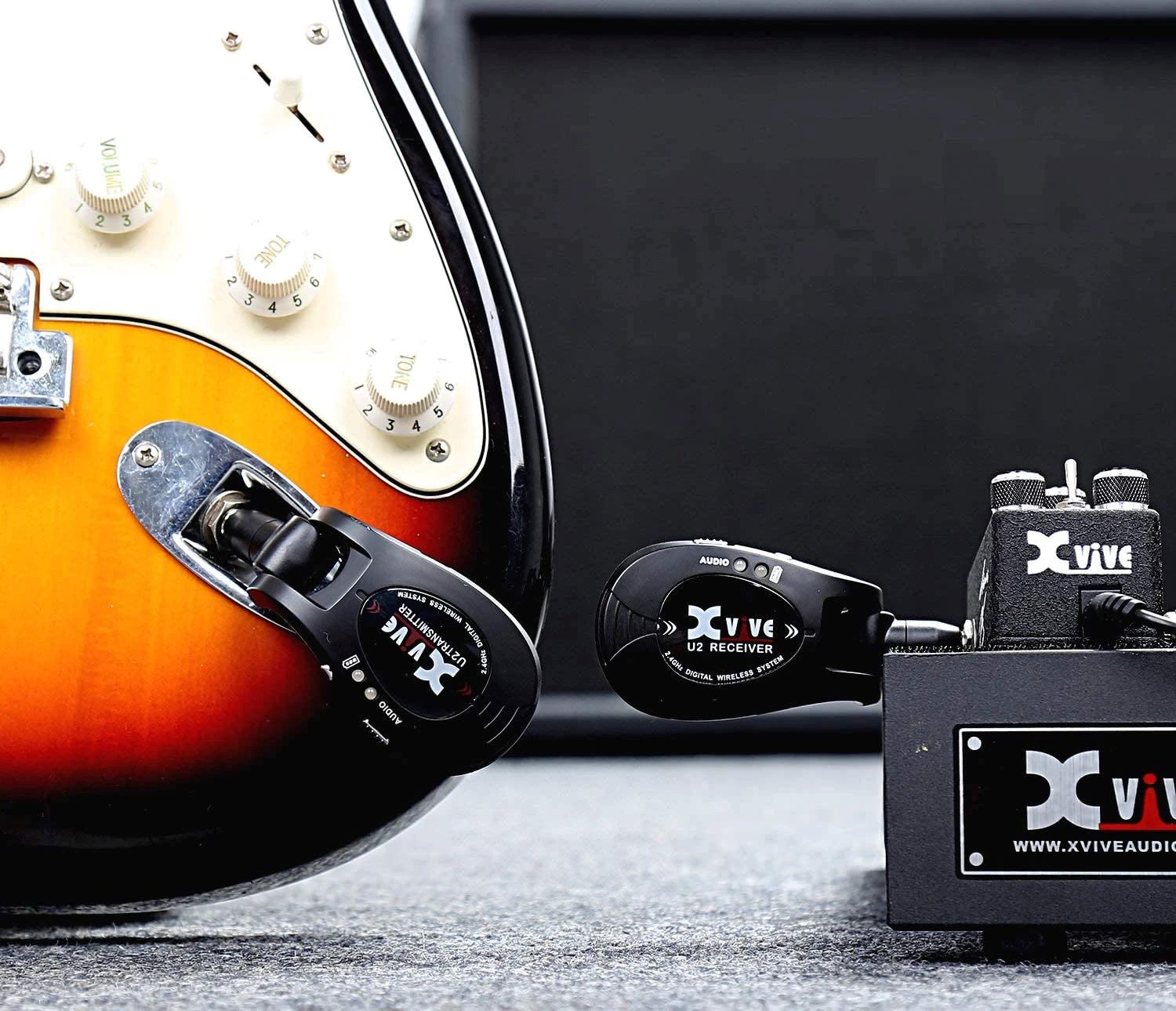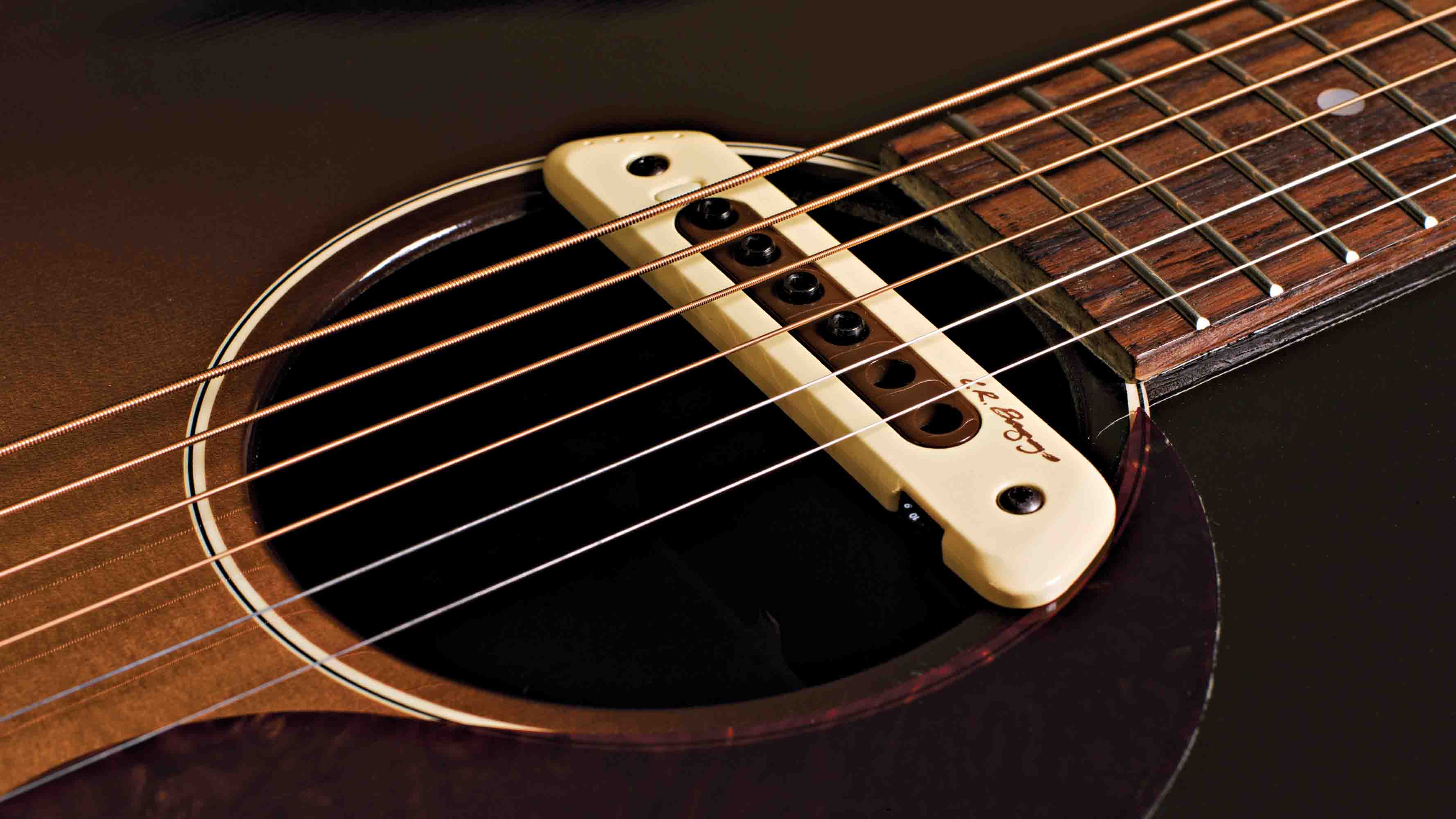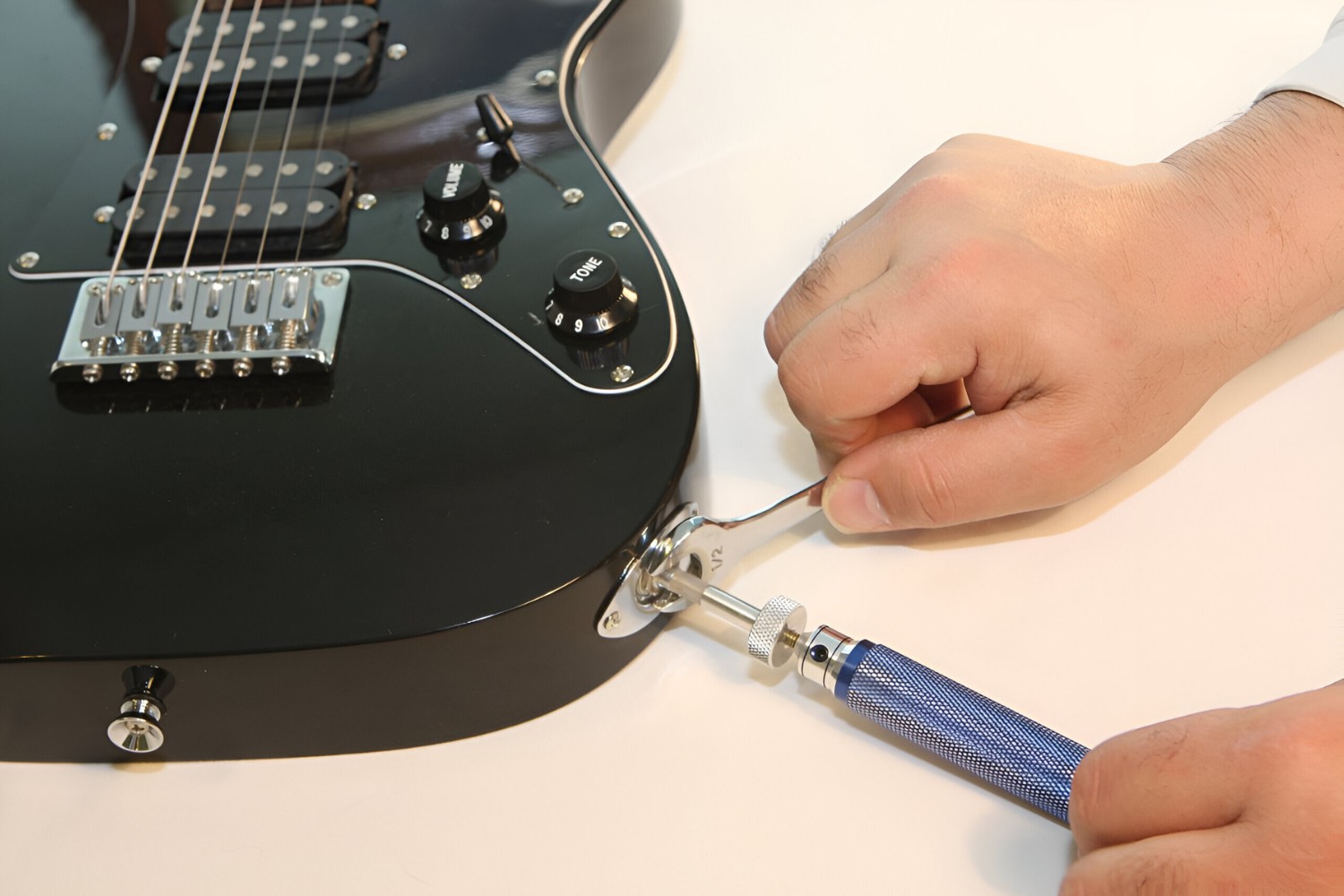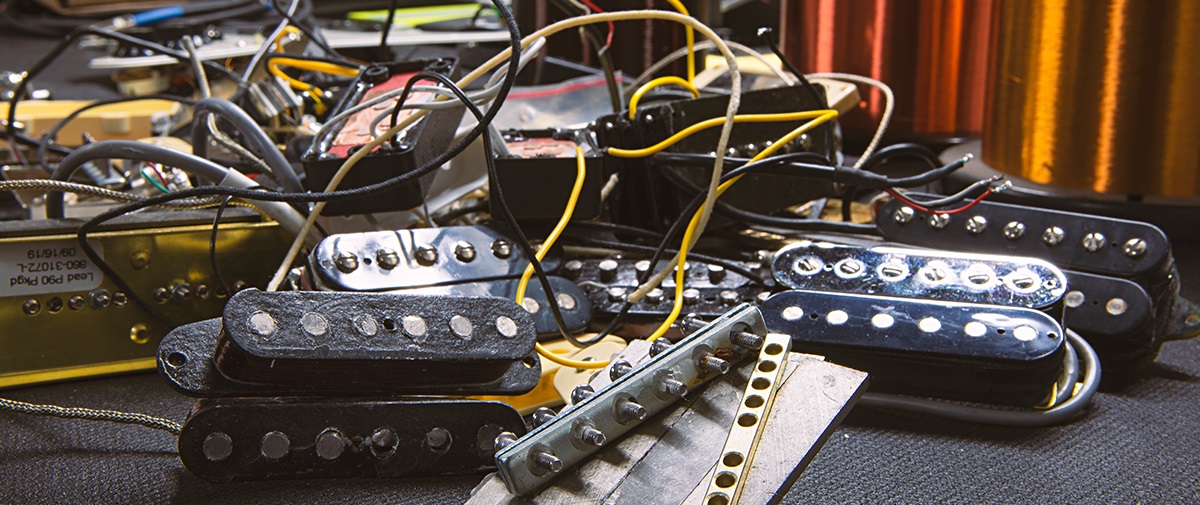Introduction
The electric guitar, an iconic instrument that has shaped the landscape of modern music, is a marvel of engineering and artistic expression. Its ability to produce a wide array of sounds, from soulful blues to blistering rock solos, has captivated audiences for decades. Understanding the inner workings of an electric guitar unveils the intricate craftsmanship and technology that contribute to its unique sound.
The electric guitar's evolution from its acoustic predecessor marked a pivotal moment in music history. With the invention of the electric guitar, musicians gained the ability to amplify and manipulate sound in ways previously unimaginable. This innovation expanded the sonic possibilities for artists and revolutionized the way music was created and performed.
Exploring the anatomy and functionality of an electric guitar offers a glimpse into the synergy of art and science. From the strings and pickups to the amplifier and speakers, each component plays a crucial role in producing the electrifying tones that define the instrument. Understanding how an electric guitar works provides insight into the magic behind the music and the technical prowess required to master this dynamic instrument.
As we delve into the inner workings of the electric guitar, we will uncover the components that contribute to its distinctive sound, explore the process of signal generation and amplification, and shed light on the diverse range of pickups that shape its tonal palette. By unraveling the mysteries of the electric guitar, we embark on a journey through the realms of music, technology, and creativity, gaining a deeper appreciation for the instrument that has left an indelible mark on the world of music.
The Components of an Electric Guitar
At its core, an electric guitar is a complex amalgamation of carefully crafted components that work in harmony to produce its distinctive sound. Understanding each element provides insight into the instrument’s functionality and sonic capabilities.
1. Body: The body of an electric guitar serves as the foundation for its structural integrity and tonal characteristics. Various types of wood, such as mahogany, alder, and maple, are commonly used to construct guitar bodies, each imparting unique tonal properties to the instrument.
2. Neck: Connected to the body, the neck of the electric guitar plays a crucial role in determining playability and tone. It typically features frets, which divide the neck into distinct intervals, allowing the player to produce different notes and chords.
3. Headstock: Positioned at the end of the neck, the headstock houses the tuning pegs, which enable the player to adjust the tension of the strings, thereby tuning the guitar to the desired pitches.
4. Strings: The strings of an electric guitar, usually made of steel or nickel, are responsible for producing sound when plucked or strummed. The tension and gauge of the strings significantly impact the instrument’s playability and tonal characteristics.
5. Pickups: These magnetic devices are mounted on the body of the guitar and are responsible for converting string vibrations into electrical signals. Different types of pickups, such as single-coil and humbucker pickups, offer distinct tonal profiles, contributing to the instrument’s sonic versatility.
6. Bridge: The bridge of the electric guitar anchors the strings and facilitates precise intonation and string height adjustments, crucial for achieving optimal playability and tonal quality.
7. Controls: Typically located on the body of the guitar, the controls include knobs and switches that allow the player to adjust volume, tone, and pickup selection, offering a wide range of sonic possibilities.
These fundamental components, meticulously designed and integrated, form the backbone of the electric guitar, laying the groundwork for the instrument’s expressive capabilities and sonic diversity. As we unravel the intricate details of an electric guitar’s anatomy, we gain a deeper appreciation for the craftsmanship and engineering that underpin its musical prowess.
How Electric Signals are Produced
Central to the operation of an electric guitar is the process by which the vibrations of the strings are transformed into electrical signals, a fundamental step in the generation of its distinctive sound. This remarkable conversion occurs through the interaction of the guitar’s pickups with the motion of the strings, culminating in the creation of electrical impulses that carry the essence of the player’s performance.
When a player plucks or strums the strings of an electric guitar, they set the strings in motion, causing them to vibrate within the magnetic field of the pickups. Single-coil pickups, consisting of a single coil of wire wrapped around magnets, capture the string vibrations and induce electrical currents in the coil through electromagnetic induction. This process generates a raw electrical signal that mirrors the nuances of the strings’ vibrations, preserving the subtleties of the player’s touch and technique.
Alternatively, humbucker pickups, comprising two coils of wire wound in opposite directions and connected out of phase, excel at mitigating unwanted electromagnetic interference and noise while capturing the string vibrations. The dual-coil design of humbuckers results in a warmer and thicker sound, characterized by a reduction in the hum and buzz often associated with single-coil pickups.
Once the electrical signals are produced by the pickups, they are channeled through the guitar’s internal wiring to the output jack, where they are ready to embark on the next stage of their sonic journey. This crucial phase sets the stage for the amplification and processing of the electrical signals, ultimately shaping the timbre and character of the guitar’s output.
The intricate process of signal production in an electric guitar underscores the seamless fusion of artistry and technology, where the physical interaction between the player and the instrument gives rise to ethereal electrical impulses that carry the soul of the music. Understanding this pivotal stage in the electric guitar’s operation unveils the enchanting alchemy that transpires within the instrument, as it breathes life into the melodies and emotions woven by the hands of the musician.
Amplification and Sound Production
Once the electrical signals produced by the pickups have been generated, the electric guitar embarks on a transformative journey through the realm of amplification and sound production. This pivotal phase harnesses the power of amplifiers and speakers to magnify and sculpt the electrical signals, ultimately giving rise to the vibrant and resonant tones that define the electric guitar’s sonic identity.
Amplifiers, revered as the heart of the electric guitar’s sonic arsenal, serve as the conduit through which the raw electrical signals are imbued with power and character. These electronic marvels amplify the weak electrical signals from the guitar to a level capable of driving the speakers, while also shaping the tonal characteristics of the sound through equalization and gain controls.
The preamplifier stage of the amplifier, often integrated into the guitar itself or housed within the amplifier unit, plays a pivotal role in refining and shaping the raw signals before they journey through the amplifier’s circuitry. This initial stage sets the foundation for the sonic landscape, allowing the player to sculpt the tonal qualities of the guitar’s output, from pristine clean tones to searing overdriven textures.
As the signals traverse the amplifier’s circuitry, they encounter the power amplifier stage, where they are boosted to a level capable of driving the speakers. This phase imparts richness and depth to the signals, breathing life into the music and infusing it with the dynamic range and expressive nuances emblematic of the electric guitar’s sonic allure.
Once the signals have been amplified, they are channeled to the speakers, where the electrical energy is transmuted into acoustic waves that reverberate through the air, enveloping the listener in the mesmerizing tapestry of sound woven by the electric guitar. The speakers, meticulously engineered to faithfully reproduce the nuances of the amplified signals, play a pivotal role in shaping the final sonic output, ensuring that the intricacies of the guitar’s tonal palette are conveyed with fidelity and clarity.
The symbiotic interplay between amplifiers and speakers represents the culmination of the electric guitar’s sonic journey, where the ethereal electrical signals, born from the interaction of the player and the instrument, are magnified and transmuted into the captivating sounds that have enraptured audiences for generations. Understanding the amplification and sound production process illuminates the profound synergy of art and technology that underpins the electric guitar’s sonic prowess, offering a glimpse into the enchanting alchemy that fuels its musical magic.
Types of Electric Guitar Pickups
The electric guitar’s sonic versatility is intricately linked to the diverse array of pickups available, each offering distinct tonal characteristics and sonic profiles that shape the instrument’s sonic identity. Understanding the various types of pickups provides insight into the tonal palette and sonic flexibility inherent in the electric guitar, offering players a rich tapestry of sounds to explore and express their musical vision.
1. Single-Coil Pickups: Renowned for their bright and articulate sound, single-coil pickups are characterized by their clear and crisp tonal qualities. These pickups excel at capturing the nuances of the strings’ vibrations, delivering a vibrant and twangy sound that has become synonymous with genres such as blues, rock, and country. However, single-coil pickups are more susceptible to electromagnetic interference and hum, a trait that has spurred the development of alternative pickup designs.
2. Humbucker Pickups: Distinguished by their warm and robust sound, humbucker pickups are revered for their ability to mitigate unwanted noise and interference, making them a popular choice for genres that demand a powerful and noise-free tone, such as hard rock and heavy metal. The dual-coil design of humbuckers results in a thicker and fuller sound, characterized by enhanced sustain and a reduction in the hum often associated with single-coil pickups.
3. P-90 Pickups: Bridging the sonic characteristics of single-coil and humbucker pickups, P-90 pickups offer a unique tonal profile that combines the brightness of single-coils with the warmth and midrange punch of humbuckers. This versatile pickup type is favored for its ability to deliver a balanced and dynamic sound, making it a popular choice across a wide spectrum of musical genres, from jazz and blues to alternative and indie rock.
4. Active Pickups: Powered by an onboard preamp, active pickups are lauded for their high output and low noise, making them ideal for genres that demand a high-gain and aggressive sound, such as metal and hard rock. The onboard preamp imparts a heightened level of control and versatility, allowing players to sculpt their tone with precision and achieve a wide range of sonic textures.
By embracing the diverse range of electric guitar pickups, players can unlock a wealth of sonic possibilities, tailoring their instrument’s sound to suit their artistic vision and musical expression. The nuanced differences in tonal characteristics offered by various pickups underscore the boundless creativity and sonic exploration facilitated by the electric guitar, empowering players to craft a sonic identity that resonates with their musical aspirations.
The Role of the Amplifier
The amplifier stands as a cornerstone of the electric guitar’s sonic architecture, wielding immense influence over the instrument’s tonal characteristics and expressive capabilities. Its transformative power magnifies the raw electrical signals from the guitar, sculpting them into a rich tapestry of sound that embodies the player’s musical vision and emotional nuances.
One of the amplifier’s primary functions is to amplify the weak electrical signals generated by the guitar’s pickups to a level capable of driving the speakers, thereby producing audible sound. This amplification process is essential for imbuing the guitar’s signals with the requisite power and presence to resonate through the air, enveloping the listener in the captivating aura of amplified music.
Beyond sheer amplification, the amplifier serves as a conduit for shaping the tonal qualities of the guitar’s output. Through the implementation of equalization controls, such as bass, midrange, and treble adjustments, the amplifier empowers the player to tailor the instrument’s sonic characteristics to suit their artistic vision. This level of sonic customization enables players to sculpt their sound with precision, from crystalline clean tones to searing overdriven textures, imbuing their music with a personalized sonic identity.
Moreover, amplifiers often feature gain controls that govern the degree of signal distortion, a pivotal element in shaping the guitar’s timbre and expressiveness. By manipulating the gain settings, players can introduce varying degrees of harmonic saturation and overdrive, imbuing their performance with emotive depth and dynamic range. This capability for expressive distortion has become a hallmark of the electric guitar’s sonic allure, allowing players to imbue their music with raw emotion and visceral impact.
Furthermore, amplifiers may incorporate onboard effects, such as reverb, delay, and modulation, expanding the sonic palette available to the player. These effects bestow the guitar’s sound with spatial depth, atmospheric textures, and ethereal ambience, elevating the instrument’s expressive capabilities and enriching the musical narrative woven by the player’s hands.
As the conduit through which the electric guitar’s raw signals are transformed into a resplendent symphony of sound, the amplifier stands as a testament to the profound synergy of artistry and technology. Its transformative influence empowers players to craft sonic landscapes that reflect their musical aspirations and emotional depth, cementing its status as an indispensable ally in the pursuit of sonic excellence.
Conclusion
The electric guitar, a marvel of artistry and engineering, stands as an emblem of sonic innovation and creative expression. Its intricate components, from the resonant body and responsive pickups to the transformative amplifier, converge to form a symphony of technology and artistry, empowering musicians to craft evocative melodies and vibrant sonic landscapes.
By unraveling the inner workings of the electric guitar, we have embarked on a journey through the realms of music, technology, and creativity, gaining a deeper appreciation for the instrument’s profound impact on the world of music. The diverse array of electric guitar pickups, each imbued with unique tonal characteristics, offers players a rich tapestry of sounds to explore and express their musical vision, while the amplifier stands as a transformative force, shaping the instrument’s tonal qualities and expressive capabilities with unparalleled precision.
At the heart of the electric guitar’s allure lies the seamless fusion of artistry and technology, where the physical interaction between the player and the instrument gives rise to ethereal electrical impulses that carry the soul of the music. This enchanting alchemy fuels the instrument’s musical magic, imbuing each note and chord with emotive depth and sonic resonance.
As we reflect on the electric guitar’s profound impact on the landscape of modern music, we recognize its enduring legacy as a catalyst for sonic innovation and artistic exploration. From the searing solos of rock legends to the soul-stirring melodies of blues virtuosos, the electric guitar has left an indelible mark on the fabric of musical history, shaping the sonic tapestry of generations and inspiring countless musicians to push the boundaries of creativity.
In the hands of virtuosos and aspiring musicians alike, the electric guitar continues to serve as a conduit for boundless creativity and emotive storytelling, its captivating sound echoing through concert halls, recording studios, and intimate venues. With each resonant chord and searing riff, the electric guitar weaves a narrative that transcends language and culture, speaking to the depths of the human experience and igniting the flames of artistic passion.
As we celebrate the electric guitar’s enduring legacy, we honor its role as a symbol of artistic innovation and sonic exploration, a testament to the profound marriage of craftsmanship and creativity that defines the world of music. The electric guitar stands as a beacon of inspiration, inviting players to embark on a sonic odyssey, where the boundaries of expression are boundless, and the language of music knows no limits.







